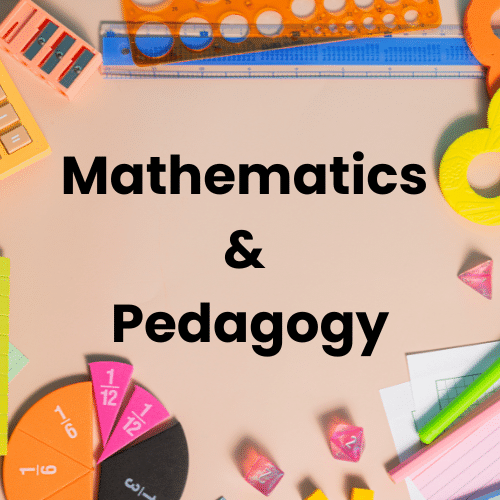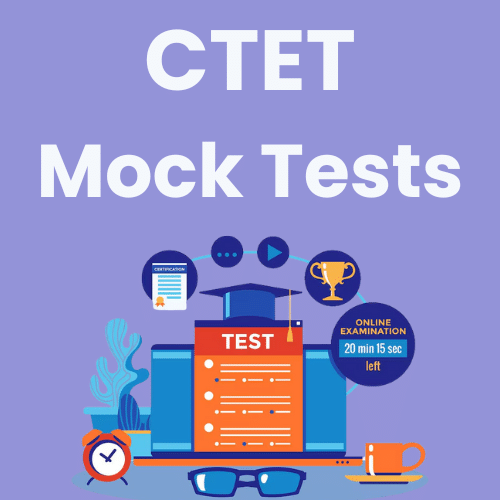Class 9 Science: Sample Question Paper Term I- 1 (With Solutions) | Science Class 9 PDF Download
| Table of contents |

|
| Class - IX |

|
| Time: 90 |

|
| Max. Marks: 40 |

|
| Section - A |

|
| Section - B |

|
| Section - C |

|
Class - IX
Time: 90
Max. Marks: 40
General Instructions:
- The Question Paper contains three sections.
- Section - A has 24 questions. Attempt any 20 questions.
- Section - B has 24 questions. Attempt any 20 questions.
- Section - C has 12 questions. Attempt any 10 questions.
- All questions carry equal marks.
- There is NO negative marking.
Section - A
Q.1: Seema bought arhar dal (tuvar dal) from the market. On adding water to the dal the water became yellow in colour. She took a sample of this yellow water to the laboratory and added a few drops of HCl. The sample became pink. This confirmed that the adulterant to the dal was:
(a) Potassium dichromate
(b) Red dye
(c) Turmeric
(d) Metanil yellow
Correct Answer is Option (d)
Metanil yellow is a yellow colour dye, generally used colouring food material, for e.g. starch when dyed with metanil yellow looks like turmeric. Poor quality dal when dyed with metanil yellow looks superior quality dal.
Q.2: What can you say about the motion of an object whose distance-time graph is a straight line parallel to time-axis?
(a) object is uniformly accelerated
(b) constant time
(c) object is moving with constant speed
(d) object is at rest
Correct Answer is Option (d)
If a body is at rest, then as the time passes, there is no change in the distance travelled by the body. Hence, the distance-time graph of a body at rest is a horizontal line parallel to time axis.
Q.3: Two bodies of 5 kg and 3 kg moving with velocities 3 m/s and 10 m/s in a straight line with 3 kg behind 5 kg collide. After the collision, 3 kg has a velocity of 5 m/s. The velocity of 5 kg mass is
(a) 10 m/s
(b) 6 m/s
(c) 9 m/s
(d) 3 m/s
Correct Answer is Option (b)
If v2 = x
Since momentum must be conserved, so,
m1u1 + m2 u2 = m1v1 + m2v2
5 × 3 + 3 × 10 = 3 × 5 + 5 × X
15 + 30 = 15 + 5X
5X = 45-15 = 30
X = 30/5 = 6 m/s
Q.4: Chromosomes are made up of
(a) RNA
(b) DNA
(c) DNA and protein
(d) Protein
Correct Answer is Option (c)
Each chromosome is made up of DNA tightly coiled many times around proteins called histones that support its structure.
Q.5: Name the part of neuron which carries impulses from cyton.
(a) All of these
(b) Axon
(c) dendrite
(d) Cell body
Correct Answer is Option (b)
Nervous tissue consists of nerve cells or neurons. Dendrite present on the cell body receives a stimulus and cyton converts stimulus into nerve impulses and carries impulses through the axon.
Q.6: Which of these is NOT an application of centrifugation?
(a) Separation of butter from cream
(b) Squeezing of water from wet clothes in washing machines
(c) Testing of blood for the diagnosis of diseases
(d) Separation of colors in a dye
Correct Answer is Option (d)
The separation of colors in a dye is an important application of chromatography. In this technique two or more solids dissolved in the same solvent in small quantities are separated out from one another. Hence, the separation of colours in a dye is not an important application of centrifugation.
Q.7: Which of the following velocity-time graph represents uniform acceleration?
(a)
(b) 
(c) 
(d) 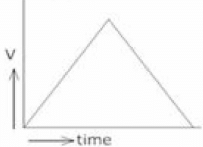
Correct Answer is Option (b)
In the velocity-time graph as velocity changes at a constant rate with respect to time in uniformly accelerating motion, the graph would be a straight line with its slope indicating the amount of acceleration.
Q.8: Match the following with correct response.
(a) 1-D, 2-A, 3-C, 4-B
(b) 1-B, 2-D, 3-A, 4-C
(c) 1-A, 2-C, 3-B, 4-D
(d) 1-C, 2-B, 3-D, 4-A
Correct Answer is Option (c)
Units of-
- force- Newton
- momentum- kg m/s
- acceleration is caused due to unbalanced force acting on the body,
- rocket works on the principle of Newton's third law of motion
Q.9: Lipid molecules in the cell are synthesized by
(a) Plastids
(b) Rough endoplasmic reticulum
(c) Golgi apparatus
(d) Smooth endoplasmic reticulum
Correct Answer is Option (d)
The smooth endoplasmic reticulum lacks ribosomes and functions in lipid manufacture and metabolism, the production of steroid hormones, and detoxification.
Q.10: Match the following with the correct response:
(a) (A) - (iv), (B) - (i), (C) - (iii), (D) - (ii)
(b) (A) - (i), (B) - (iii), (C) - (ii), (D) - (iv)
(c) (A) - (ii), (B) - (iv), (C) - (i), (D) - (iii)
(d) (A) - (iii), (B) - (ii), (C) - (iv), (D) - (i)
Correct Answer is Option (a)
- Genes are functional units of heredity that determine the characters of organisms,
- Diffusion is the process of passage of fluid from a region of high concentration to a region of low concentration. It plays an important role in the gaseous exchange between the cells as well as the cell and its external environment. Water also obeys the law of diffusion,
- The passage of water from a region of higher water concentration to a region of lower water concentration through a semi-permeable membrane is called osmosis. The movement of water across the plasma membrane is affected by the amount of substance dissolved in water.
- Plasmolysis is a plant cell that refers to the contraction of protoplast as a result of the loss of water from the cell. The shrinkage of cytoplasm occurs due to exo-osmosis in a hypertonic medium. A hypertonic solution is one that has a lesser concentration of water as compared to that inside the cell. During the process, there is a higher external osmotic pressure and a net flow of water from the cell.
Q.11: Which of the following are chemical changes?
(a) Melting of ice
(b) The cooking of vegetables.
(c) Freezing of water
(d) Drying of wet clothes in sun light
Correct Answer is Option (b)
The cooking of vegetables is a chemical change because a new substance is formed having new properties and heat is used to change the state. The cooked vegetable cannot be reversed back as a raw vegetable.
Q.12: What is the quantity which is measured as the area occupied by the velocity-time graph?
(a) displacement
(b) speed
(c) acceleration
(d) distance
Correct Answer is Option (a)
In a velocity-time graph, the area enclosed by the velocity-time curve, and the time-axis gives us the displacement of the body.
In a velocity-time graph:
i. The slope of the graph gives the acceleration of the body. Finding the slope of the graph gives its acceleration.
ii. The area under the velocity-time graph gives the displacement of the object.
Q.13: When a 12 N force acts on 3 kg mass for a second, the change in velocity is (in m/s)
(a) 18
(b) 36
(c) 2
(d) 4
Correct Answer is Option (d)
Q.14: Which of the following acts as a garbage disposal system of the cell?
(a) Vacuole
(b) Lysosome
(c) Peroxisome
(d) Golgi body
Correct Answer is Option (b)
The lysosome is a membrane-bound organelle found in nearly all animal cells. They are spherical vesicles that contain hydrolytic enzymes that can break down many kinds of biomolecules. It is also known as suicidal bags or the Garbage disposal system as it cleans the degenerating cells inside the body.
Q.15: What constitutes thickening in collenchyma?
(a) Cellulose
(b) Both Cellulose and Pectin
(c) Lignin
(d) Pectin
Correct Answer is Option (b)
Collenchyma cells are elongated cells with irregularly thick cell walls that provide support and structure. Their thick cell walls are composed of the compounds cellulose and pectin.
These cells are often found under the epidermis or the outer layer of cells in young stems and in leaf veins
Q.16: A mixture of sulphur and carbon disulphide is
(a) heterogeneous and shows Tyndall effect
(b) heterogeneous and does not show Tyndall effect
(c) homogeneous and shows Tyndall effect
(d) homogeneous and does not show Tyndall effect
Correct Answer is Option (d)
Sulphur and carbon disulphide do not form a uniform composition and the properties of the mixture are not same throughout.
Therefore, it forms a heterogeneous composition.
Moreover, it shows a Tyndall effect, because in water sulphur remains suspended whereas carbon disulphide settles down as a layer at the bottom.
Q.17: ______acts as a garbage disposal system of the cell.
(a) Vacuole
(b) Golgi body
(c) Lysosome
(d) Peroxisome
Correct Answer is Option (c)
Lysosomes present in the cytoplasm of a cell contain very strong enzymes that can break down the organic wastes produced in the cell. They are called a garbage disposal system of the cell.
Q.18: The efferent part of neuron is ____
(a) Both Axon and Dendrite
(b) Cyton
(c) Axon
(d) Dendrite
Correct Answer is Option (c)
In the peripheral nervous system, an efferent nerve fiber is the axon of a motor neuron.
Q.19: Match the following with the correct response:
(a) (A) - (i), (B) - (iii),(C) - (ii), (D) - (iv)
(b) (A) - (iii), (B) - (ii),(C) - (iv), (D) - (i)
(c) (A) - (ii), (B) - (iv),(C) - (i), (D) - (iii)
(d) (A) - (iv), (B) - (i),(C) - (iii), (D) - (ii)
Correct Answer is Option (a)
- A body has a uniform acceleration if it travels in a straight line and its velocity increases by equal amounts in equal intervals of time.
- Odometer- An instrument for measuring the distance travelled by a wheeled vehicle.
- Energy-Energy is a scalar. If it were a vector then conservation of energy would fail during uniform circular motion in radial potential and many other situations.
- Acceleration -Acceleration is a vector quantity because it has both magnitude and direction.
Q.20: When a force is exerted on an object, it can change its
A. State
B. Position
C. Shape
D. Direction
(a) A and D
(b) A, B and D
(c) B and C
(d) All of these
Correct Answer is Option (d)
When a force is exerted on an object, it can change its state, position, shape, and direction. Force can make a stationary object move or can change its position of rest.
Q.21: What is the correct order of the methods you apply to separate the components of a mixture of NH4Cl, common salt and sand?
(a) Dissolving in water, evaporation, and sublimation
(b) Dissolving in water, filtration, evaporation, and sublimation.
(c) Sublimation, dissolving in water, filtration and evaporation
(d) Moving a magnet, dissolving in water and sublimation.
Correct Answer is Option (c)
Firstly, ammonium chloride can be separated by sublimation. Then dissolve the mixture of sand and salt in water and separate sand by using filtration and salt can be separated from water by evaporation.
Q.22: Chlorophyll is present in ______ .
(a) Thylakoid
(b) Matrix
(c) Stroma
(d) Cristae
Correct Answer is Option (a)
A thylakoid is a sheet-like membrane-bound structure that is the site of the light- dependent photosynthesis reactions in chloroplasts and cyanobacteria. It is the site that contains the chlorophyll used to absorb light and use it for biochemical reactions.
Q.23: Which connective tissue supports and provides flexibility to the body parts?
(a) Tendon
(b) Bone
(c) Cartilage
(d) Ligament
Correct Answer is Option (c)
Cartilage is a connective tissue that provides support and flexibility to the body parts. It smoothens bone surfaces at joints. It is also present in the nose, ear, trachea, and larynx.
Q.24: What does the slope of the velocity-time graph give?
(a) acceleration
(b) force
(c) displacement
(d) distance
Correct Answer is Option (a)
We can find out the value of acceleration from the slope of the velocity-time graph of a moving body.
Acceleration = Change in velocity / time = Slope of the velocity-time graph provided.
 |
Download the notes
Class 9 Science: Sample Question Paper Term I- 1 (With Solutions)
|
Download as PDF |
Section - B
Q.25: Newton's Second law of motion gives us a measure of
(a) Force
(b) Mass
(c) Acceleration
(d) Inertia
Correct Answer is Option (a)
Newton's Second law of motion gives us a measure of force.
Newton's Second Law of motion states that the rate of change of momentum of an object is proportional to the applied unbalanced force in the direction of the force,
ie., F = ma
Where F is the force applied, m is the mass of the body, and a, the acceleration produced.
Q.26: The area below v-t graph is a measure of:
(a) Angular speed
(b) Displacement
(c) Angular acceleration
(d) Acceleration
Correct Answer is Option (b)
The area under the velocity-time graph gives the distance (magnitude of displacement) which has the unit is metre (m).
Q.27: The characteristics of eukaryotic cells are:
A. Distinct nucleus
B. Nucleolus
C. Nuclear membrane
D. Nucleoid
(a) A, B and D
(b) A, B and C
(c) B and C
(d) All of these
Correct Answer is Option (b)
Eukaryotic cells (Eu means true; karyon means membrane) have a distinct nucleus, nucleolus, and a nuclear membrane. Nucleoid is a part of prokaryotic cells.
Q.28: While preparing a temporary mount of cheek cells, teacher asked Rohit to pick up the stain. He had four bottles A, B, C, and D containing methylene blue, glycerine, distilled water, Canada balsum. Which one should he pick?
(a) B
(b) C
(c) D
(d) A
Correct Answer is Option (d)
Methylene blue is used to stain human cheek epithelial cells better. Methylene blue stains negatively charged molecules in the cell, including DNA and RNA. This dye is toxic when ingested and it causes irritation when in contact with the skin and eyes.
Q.29: Plasmolysis is a plant cell is defined as:
(a) Break down (lysis) of plasma membrane in hypotonic medium
(b) Shrinkage of nucleoplasm
(c) Shrinkage of cytoplasm in hypertonic medium
(d) None of these
Correct Answer is Option (c)
Plasmolysis is a plant cell that refers to the contraction of protoplast as a result of the loss of water from the cell. The shrinkage of cytoplasm occurs due to exo-osmosis in a hypertonic medium. A hypertonic solution is one that has a lesser concentration of water as compared to that inside the cell. During the process, there is a higher external osmotic pressure and a net flow of water from the cell through the semi-permeable cell membrane.
Q.30: A body starting at a point, say A, reaches, say B, ahead in a straight line and returns back to A. Then there is:
(a) negative displacement
(b) cannot be said
(c) zero displacement
(d) positive displacement
Correct Answer is Option (c)
When the body comes back to its starting point, it has zero resultant displacements but covers a certain non-zero distance.
Q.31: Assertion (A): Colloidal solutions are stable, and the colloidal particles do not settle down.
Reason (R): Brownian movement counters the force of gravity acting on colloidal particles.
(a) Both A and R are true and R is the correct explanation of A.
(b) Both A and R are true but R is not the correct explanation of A.
(c) A is true but R is false.
(d) A is false but R is true.
Correct Answer is Option (a)
Due to the constant movement of the colloidal particles do not settle down.
Q.32: Assertion (A): The cell wall in plants is non-living and freely permeable.
Reason (R): Cell wall in plants provides mechanical strength.
(a) Both A and R are true and R is the correct explanation of A.
(b) Both A and R are true but R is not the correct explanation of A.
(c) A is true but R is false.
(d) A is false but R is true.
Correct Answer is Option (b)
The cell wall is permeable because it allows all substances to move across the cell wall.
Q.33: Assertion (A): The inner lining of the intestine has tall epithelial cells.
Reason (R): Columnar epithelium facilitates absorption and secretion.
(a) Both A and R are true and R is the correct explanation of A.
(b) Both A and R are true but R is not the correct explanation of A.
(c) A is true but R is false.
(d) A is false but R is true.
Correct Answer is Option (a)
Where absorption and secretion occur, such as in the inner lining of the intestine, tall epithelial cells or columnar epithelium is present. This epithelium facilitates movement or diffusion across the epithelial barrier.
Q.34: Assertion (A): The bus travels 250 km from Delhi to Jaipur towards the West and then comes back to the starting point. Total displacement is zero.
Reason (R): The average velocity of the bus for the whole journey (both ways) is 0 kilometers per hour.
(a) Both A and R are true and R is the correct explanation of A.
(b) Both A and R are true but R is not the correct explanation of A.
(c) A is true but R is false.
(d) A is false but R is true.
Correct Answer is Option (b)
In this case, the bus travels 250 km from Delhi to Jaipur towards the West and then comes back to starting point Delhi in the reverse direction. So, the total displacement.
Q.35: Assertion (A): A large number of concurrent forces acting at the same point of the object, then the object will be in equilibrium if the sum of all the forces is equal to zero.
Reason (R): Equilibrium of a particle in mechanics refers to the situation when the net external force on the particle is non-zero.
(a) Both A and R are true and R is the correct explanation of A.
(b) Both A and R are true but R is not the correct explanation of A.
(c) A is true but R is false.
(d) A is false but R is true.
Correct Answer is Option (c)
Q.36: At room temperature, a non-metal which is liquid is
(a) Fluorine
(b) Oxygen
(c) Bromine
(d) Sulphur
Correct Answer is Option (c)
In general, metals are in the solid-state at room temperature, the only metal which is in the liquid state is mercury (Hg) and the only nonmetal that is a liquid at room temperature is bromine.
Q.37: The slope of the x-t graph is a measure of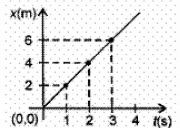 (a) velocity = 2ms-1
(a) velocity = 2ms-1
(b) acceleration = 2ms-2
(c) acceleration = 1/2 ms-2
(d) velocity = 1/2 ms-2
Correct Answer is Option (a)
The position-time graph is used in physics to describe the motion of an object over a period of time. Time, in seconds, is conventionally plotted on the x-axis and the position of the object, measured in meters, is plotted along the y-axis. The slope of the position-time graph reveals important information about the velocity of the object.
Q.38: The main difference between an animal cell and a plant cell is:
(a) Growth
(b) Respiration
(c) Movement
(d) Nutrition
Correct Answer is Option (d)
Plants cells contain chlorophyll which is an essential requirement for photosynthesis. Animal cells lack chlorophyll. They obtain their food from plants. So, a plant cell and an animal cell differ in their modes of nutrition.
Q.39: Which organelle is called the suicide bag of the cell?
(a) Lysosome
(b) Golgi bodies
(c) Chloroplast
(d) Centrosome
Correct Answer is Option (a)
The lysosomes called the suicide bag of the cell as it contains enzymes for the hydrolysis of all cell components in case of injury. It plays a minor role in cell death. It was discovered and named by Belgian biologist Christian de Duve. De Duve had termed the organelles as the "suicide bags" or "suicide sacs" of the cells. He received the Nobel Prize in Medicine in 1974 for his discovery.
Q.40: Which of the following cells is found in the cartilaginous tissue of the body?
(a) Osteocytes
(b) Mast cells
(c) Basophils
(d) Chondrocytes
Correct Answer is Option (d)
The matrix of cartilage has delicate network of collagen fibres and chondrocytes (living cells). These are present in fluid-filled spaces called lacunae. Chondrocytes multiply by mitosis and help in internal growth of cartilage.
Q.41: What is the full form of ATP?
(a) Adeno triphosphorus
(b) Adenosine triphosphate
(c) Adenosine tetraphosphate
(d) Adeno triphosphate
Correct Answer is Option (b)
The full form of ATP is adenosine triphosphate. ATP is known as the energy currency of the cell. The energy required for various chemical activities is released by mitochondria. They contain enzymes for cellular respiration.
Q.42: The term protoplasm was coined by:
(a) Haeckel
(b) Knoll and Ruska
(c) J.E.Purkinje
(d) Robert Hook
Correct Answer is Option (c)
The term protoplasm was coined by Johann Evangelist Purkinje in 1839. Protoplasm is the fluid medium inside a cell in which different cell organelles are present.
Q.43: Which of the is true for displacement?
A. It cannot be zero
B. Its magnitude is greater than the distance travelled by the object.
C. Its the shortest distance between the initial & final position.
D. It is a vector quantity.
(a) C and D
(b) A and D
(c) A and B
(d) All of these
Correct Answer is Option (a)
When a body moves from one position to another position, the shortest (straight line jdistance between the initial position and final position of the body is known as its displacement. It's a vector quantity.
If a body returns back to its initial position after completing its journey, its displacement is zero.
The magnitude of displacement can be zero, less than the magnitude of distance but can never be greater than the distance covered.
Q.44: 22 carrot gold is
(a) Heterogeneous mixture
(b) Pure element
(c) Homogenous mixture
(d) Pure compound
Correct Answer is Option (c)
22 carrot gold is a homogeneous mixture of gold or silver or Gold or Copper. Since pure gold is very soft, it cannot be used to make jewelry, and thus with 22 parts of gold 2 parts of silver or copper are mixed to make it hard.
Q.45: Which of the following will be a heterogeneous mixture?
(a) Common salt and water
(b) Cane sugar and water
(c) Alum and water
(d) Albumin and water
Correct Answer is Option (d)
The mixture in which particles are not distributed evenly and form a separate layer if left undisturbed. The mixture of Albumin and water form a heterogeneous mixture.
Q.46: Who proposed the Cell theory?
(a) Prophase
(b) Watson & Crick
(c) Mendel
(d) Schleiden and Schwann
Correct Answer is Option (d)
The 'Cell theory' was proposed by Matthias Jakob Schleiden and Theodor Schwann. According to this theory, all living organisms are made up of cells. Rudolf Virchow also contributed to the Cell theory. He proposed that new cells arise from pre-existing cells.
Q.47: Intestine absorb the digested food materials. What type of epithelial cells are responsible for that?
(a) Spindle fibres
(b) Stratified squamous epithelium
(c) Columnar epithelium
(d) Cuboidal epithelium
Correct Answer is Option (c)
Columnar epithelium consist of pillar-like cells with their nuclei towards the base. They form the lining of stomach, small intestine and colon, forming the mucous membrane. Their main function is absorption (e.g., stomach, intestine) and secretion (e.g., mucous by goblet cells).Stratified squamous epithelium, also known as pavement epithelium is covered by fibrous protein, (keratin) that covers the skin. This epithelium is waterproof and resistant to mechanical injury. Cuboidal epithelium is found in kidney tubules, thyroid vesicles and in glands.
Q.48: The meristematic tissue is found:
(a) In flowers
(b) At root tip
(c) At the tip of the leaves
(d) Below the epidermis of the stem.
Correct Answer is Option (b)
Meristematic tissue divides rapidly which results in the growth of root and shoot apex.
Section - C
Read the text carefully and answer the questions:
A solution that has dissolved as much solute as it is capable of dissolving, is said to be a saturated solution. In other words, when no more solute can be dissolved in a solution at a given temperature, it is called a saturated solution. If the amount of solute contained in a solution is less than the saturation level, it is called an unsaturated solution. Chromatography is the technique used for the separation of those solutes that dissolve in the same solvent. The principle is that immiscible liquids separate out in layers depending on their densities. Sublimation is also used to separate substance.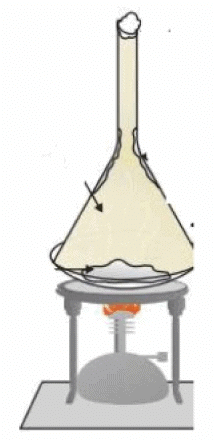 Q.49: The concentration of a solution is expressed by
Q.49: The concentration of a solution is expressed by
(a) Mass by volume percentage of a solution
(b) Mass by mass percentage of a solution
(c) Volume by volume percentage of a solution
(d) All of these
Correct Answer is Option (d)
Q.50: Chromatography is used to seperate
(a) Colours in a dye
(b) Drugs from the blood
(c) Pigments from natural colours
(d) All of these
Correct Answer is Option (d)
Q.51: Which of the given methods would you use to separate cream from milk?
(a) Filtration
(b) Distillation
(c) Fractional distillation
(d) Centrifugation
Correct Answer is Option (d)
Q.52: The amount of solute present per unit volume or per unit mass of the solution/solvent is known as
(a) The concentration of a solvent
(b) The concentration of a solute
(c) The concentration of a solution
(d) The composition of the solute
Correct Answer is Option (c)
Read the text carefully and answer the questions:
A few layers of cells beneath the epidermis are generally simple permanent tissue. Parenchyma is the most common simple permanent tissue. It consists of relatively unspecialized cells with thin cell walls They are living cells. Collenchyma allows bending of various parts of the plant-like tendrils and stems of climbers without breaking. Sclerenchyma tissue makes the plant hard and stiff. We have seen the husk of a coconut. It is made of sclerenchymatous tissue. They are long and narrow as the walls are thickened due to lignin. The tissue is present in stems, around vascular bundles, in the veins of leaves and in the hard covering of seeds and nuts. Q.53: The flexibility in plants is due to
Q.53: The flexibility in plants is due to
(a) chlorenchyma
(b) collenchyma
(c) parenchyma
(d) aerenchyma
Correct Answer is Option (b)
Q.54: Function of aerenchyma:
(a) It helps the aquatic plant to float
(b) It performs photosynthesis
(c) It provides mechanical support
(d) none of these
Correct Answer is Option (a)
Q.55: Which of the given tissues has dead cells?
(a) Parenchyma
(b) Epithelial tissue
(c) Collenchyma
(d) Sclerenchyma
Correct Answer is Option (d)
Q.56: Which of the following statement is incorrect
I. Parenchyma tissues have intercellular spaces.
II. Collenchymatous tissues are irregularly thickened at corners.
III. Apical and intercalary meristems are permanent tissues.
IV. Meristematic tissues, in its early stage, lack vacuoles, muscles
(a) (I) and (II)
(b) (Ill) and (I)
(c) (II) and (III)
(d) Only (III)
Correct Answer is Option (d)
Read the text carefully and answer the questions:
The third law of motion states that when one object exerts a force on another object, the second object instantaneously exerts a force back on the first. These two forces are always equal in magnitude but opposite in direction. Q.57: Recoiling of the gun is an example of
Q.57: Recoiling of the gun is an example of
(a) Newton’s law of gravitation
(b) Newton’s second law of motion
(c) Newton’s third law of motion
(d) Newton’s first law of motion
Correct Answer is Option (c)
Q.58: Which of the following is an incorrect statement?
I. The two opposite forces are known as the cation force
II. The two forces are equal in magnitude
III. There is a pair of forces.
IV. The two forces are not equal in magnitude
(a) (I) and (II)
(b) (IV) and (III)
(c) (II) and (III)
(d) (I) and (III)
Correct Answer is Option (d)
Q.59: A boy of mass 50 kg standing on the ground exerts a force of 500 N on the ground. The force exerted by the ground on the boy will be :
(a) 50 N
(b) 500 N
(c) 25000 N
(d) 10N
Correct Answer is Option (b)
Q.60: The acceleration produced by a force of 5 N acting on a mass of 20 kg in m/s2 is :
(a) 100
(b) 0.25
(c) 4
(d) 2.5
Correct Answer is Option (b)
|
84 videos|394 docs|61 tests
|
FAQs on Class 9 Science: Sample Question Paper Term I- 1 (With Solutions) - Science Class 9
| 1. What is the importance of Class 9 Science in the overall academic curriculum? |  |
| 2. How can students effectively prepare for the Class 9 Science exam? |  |
| 3. What are the different sections in the Class 9 Science exam? |  |
| 4. What are the key topics that students should focus on while studying for the Class 9 Science exam? |  |
| 5. How can students effectively manage their time during the Class 9 Science exam? |  |



